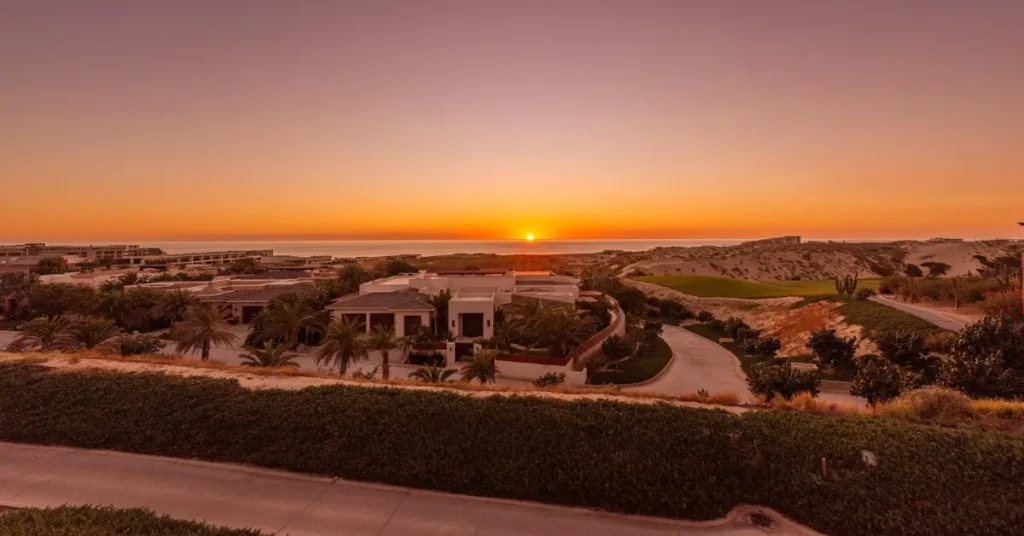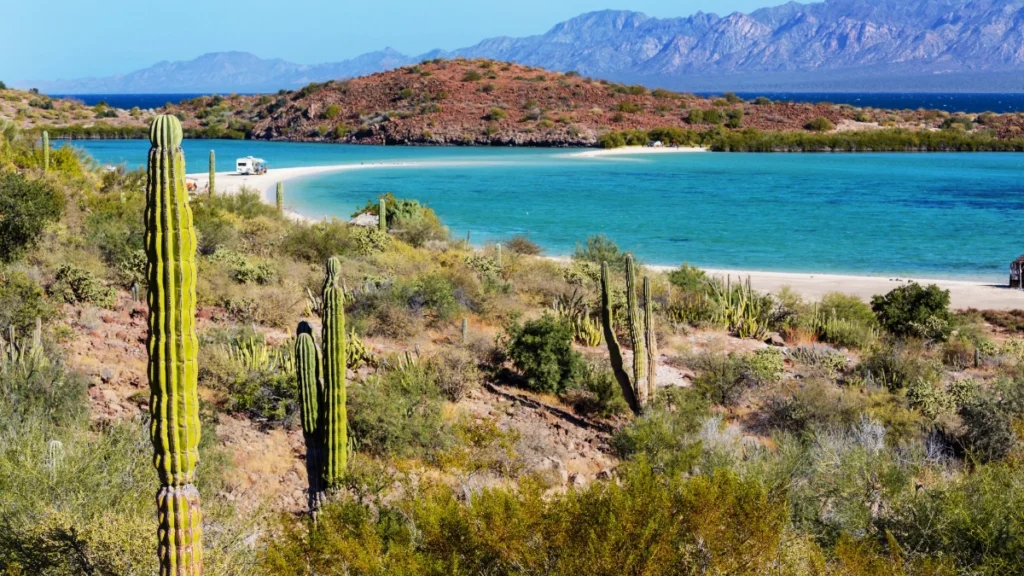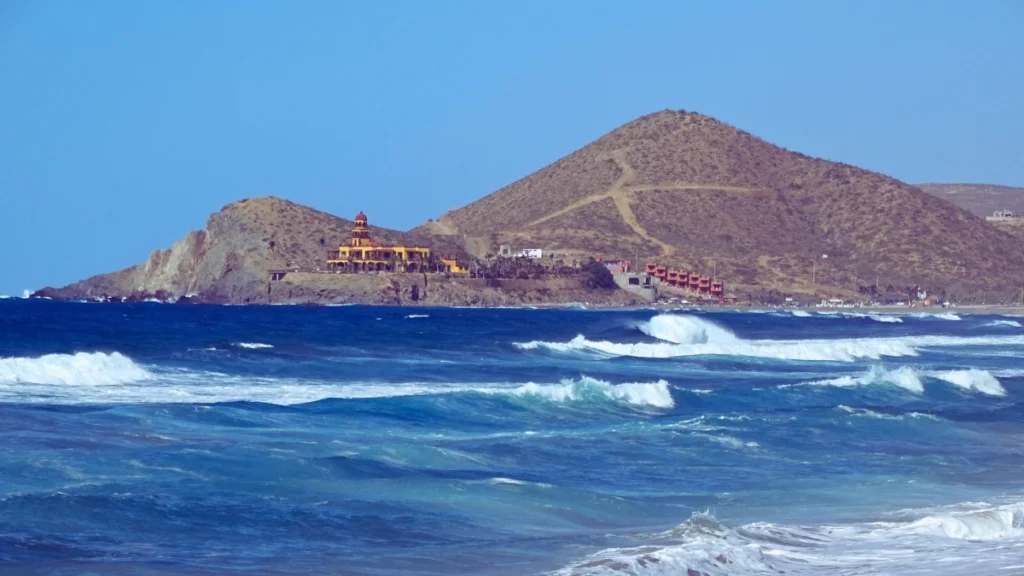
Baja Sur Real Estate Market Q1 2025: Price Increases, Inventory Shifts, and Emerging Buyer Trends
Baja Sur’s real estate market is recalibrating. After years of post-pandemic momentum, the region began to show signs of cooling. But assuming a market in retreat misses what’s actually happening.
In a follow-up conversation with La Paz-based real estate specialist Carlos Gonzalez Siten, whom we first interviewed in late 2024, we revisited three of the region’s most dynamic submarkets: La Paz, the East Cape, and the Todos Santos–Cerritos–Pescadero corridor.
What we found wasn’t a single trend but a complex mix. Rising prices in some areas, slower closings in others, and surges in inventory in a few places, while others remain starved for product.
Q1 2025 data compared to Q1 2024 underscores the contradictions. La Paz saw fewer new listings and a drop in sales volume, yet its median home price rose sharply, pointing to strength at the upper end.
Land sales surged in the East Cape near La Paz (El Sargento, Bay of Dreams, and La Ventana) even as home transactions slowed.
Meanwhile, Cerritos, Pescadero, and Todos Santos are emerging as the region’s most active growth corridor, powered by newly granted permits, improved water access, and rising interest from foreign and domestic buyers.
Beneath the numbers, broader forces are at work. Political uncertainty in the U.S. and Mexico, higher construction costs, shifting migration patterns, and the spread of remote work are all reshaping demand. “There are a lot of people in the U.S. that want to come down… not just to vacation, but to live,” Carlos points out.
This article explores those shifts, combining market data from our MLS with firsthand insights. Each section includes a short-term outlook and a year-over-year snapshot of activity. They reveal how buyer preferences, regulation, and sustainability shape Baja Sur’s next chapter.

La Paz Real Estate 2025: Rising Home Prices Amid Slowing Transaction Volume
Although interest in 1Q 2025 remained relatively strong, especially in the condo segment, the total dollar volume decreased compared to the same period last year. The transition from a seller’s market to a more balanced environment is underway.
A key factor in the market’s hesitancy is political. “The pause is very dependent on the U.S. and Canadian markets. Especially in segments such as vacation rentals or reinvestment properties.”
Carlos linked the cautious mood at the end of 2024 to a broader environment of uncertainty: “We were expecting a more stable political environment by the beginning of 2025, but the continuing uncertainty abroad, I think, is affecting all of Mexico, not only La Paz.”
Yet the decline in volume has not translated into price softness. “Prices did increase, sales not so much.” The median sold price of houses in La Paz rose approximately 15% in 2024 compared to the previous year, and high-end listings continued to draw attention, even if closings lagged.
La Paz as an Emerging Luxury Destination
New developments reinforce the perception that La Paz is gradually repositioning itself as a higher-end destination. “La Paz provides a very unique experience in terms of wellness, and at a lower cost than in the U.S. or elsewhere in Baja. It’s a strong quality-of-life value proposition. But I think that at the same time, it’s also attracting more high-end buyers.”
Carlos points to Puerta Cortes, which has launched new ocean-view lots and a planned luxury condo tower with pricing ranging from US$1.5 million to US$5 million, as a signpost of where the market is heading. Similarly, Pedregal de La Paz, developed by the same team behind Pedregal in Cabo, signals a bet on sustained luxury demand.
Still, the market faces natural constraints. Oceanfront inventory is extremely limited near downtown, and permitting issues tied to water stress continue to restrict development. “Water surrounds La Paz, but oceanfront availability is minimal.”
Most new luxury products are positioned slightly outside the city core, where beachfront land still exists, and regulations allow some flexibility.
La Paz Real Estate Outlook for 2025: Luxury Market Strength, Mid-Market Negotiations, and Political Dynamics
The path forward for La Paz in the final three quarters of 2025 appears increasingly segmented. On the one hand, high-end developments will likely draw interest from affluent foreign buyers, particularly Americans looking to relocate, retire early, or reposition their equity from overheated U.S. markets.
“If I sell my house in the U.S. that’s worth US$1 million, maybe I can buy a stunning US$600,000 property in La Paz and still be left with plenty of money in my pocket,” Carlos suggests, presenting a strategic retirement or relocation logic that is driving inbound interest despite the macro hesitation.
On the other hand, mid-market homes may enter a more negotiable pricing environment. “We’re likely gonna see prices drop; I think it’s an opportunity for a buyer to look, to use that leverage.” Negotiation may become more feasible for buyers looking below the US$1 million range as sellers adjust to a market with longer time-on-market and fewer fast closes.
One wildcard remains the political climate. “If we have a good connection with our clients, if we have a solid strategy, I think we will have a positive remainder of 2025.” However, much will depend on how buyers respond as the current U.S. administration settles in and whether the Mexican election cycle, particularly the one involving its judicial system, contributes to clarity or further caution.
Finally, infrastructure challenges, especially those related to water, will continue to influence what gets built, where, and how quickly. Permitting remains difficult in La Paz, placing a natural cap on speculative development. This cap could preserve price stability at the high end while limiting supply that could refresh the mid-tier market.
La Paz Snapshot: Q1 2025 vs. Q1 2024
Figures reflect Q1 2025 totals with % change vs. Q1 2024 in parentheses
Houses and Condos
- New Listings: 126 (–4.5%)
- Sold Listings: 44 (+22.2%)
- Total Sold Volume: US$16,407,637 (–13.8%)
- Median Sold Price: US$325,000 (+28.0%)
- Average Days on Market: 290 days (+0.5%)
Land
- New Listings: 7 (–12.5 %)
- Sold Listings: 1 (–50.0 %)
- Total Sold Volume: US$60,000 (–86.0 %)
- Median Sold Price: US$60,000 (–72.0 %)
- Average Days on Market: 185 days (–67.0 %)
What US$1 Million Buys in Baja Sur vs. the U.S.: Comparing La Paz, Todos Santos, East Cape, and Cabo
For many Americans and Canadians considering a second home or a complete relocation, an important question to ask in order to set benchmarks is: What can I buy for US$1 million in Mexico?
Carlos noted that La Paz’s value proposition remains significantly stronger than other Baja Sur markets. “A million dollars in La Paz could get you a penthouse in a luxury condo community with ocean views or a very nice house built in El Centenario. Four bedrooms, pool, all the amenities, maybe half an acre to a quarter of an acre.” In Cabo, US$1 million doesn’t go far. It might cover a beautiful condo, but not the lifestyle many expect in Mexico.
And that kind of offering is nearly unthinkable in Los Angeles or even San Diego, where land is scarce, and prices are driven by density, not design.
A slightly above-average budget can unlock more than a lifestyle in La Paz and the northern East Cape. It provides optionality. Buyers can build, remodel, or develop a rental product. They can acquire land and design their own home. In certain areas, US$1 million could even fund multiple small projects.
And increasingly, it’s not just investors asking these questions. It’s retirees and remote-working professionals evaluating how to redeploy the gains from their primary residences. For this cohort of people sitting on inflated home equity and concerned about quality of life, tax burdens, and affordability, Baja is becoming a hedge against the market pressures driving them out of the U.S.
In that sense, the US$1 million question is less about what it buys and more about what it enables: flexibility, creativity, and a different way of life.

East Cape Near La Paz: Limited Inventory and High Land Prices Drive Investment Interest
Compared to La Paz or the Todos Santos-Pescadero-Cerritos corridor, the East Cape remains lightly built and unevenly developed. While the region offers pristine coastlines, low-density living, and long-term investment potential, it is not yet fully equipped for broad market absorption. “Not all the East Cape is fully developed; you might have certain areas that are very well addressed in terms of having water, electricity… but in others, you get trucked-in water or need solar power.”
What keeps the East Cape compelling, especially areas closest to La Paz, such as La Ventana, El Sargento, and the Bay of Dreams, is its niche appeal. Bay of Dreams, for example, offers HOA infrastructure, direct power, and large lots ideal for high-end buyers seeking serenity. “It’s a very pristine beach area that also has places with HOA structures, with maintenance, water, and services.” La Ventana, by contrast, caters more to lifestyle buyers, surfers, and outdoor enthusiasts: less infrastructure but more freedom.
Despite the relative underdevelopment, the market is not idle. New listings increased across houses and land in early 2025, signaling renewed interest in the area’s potential.
East Cape Real Estate Outlook for 2025: Infrastructure Progress, Niche Buyer Interest, and Luxury Segment Resilience
The East Cape’s market is still best described as low-volume, high-interest. Transactional data remains thin, especially for homes, but sharp growth in land sales suggests that buyers with vision and patience are beginning to place long-term bets. “There are plenty of new developments, though many remain in the planning or speculative stage.”
Infrastructure will remain the primary variable in 2025. Investors with a risk appetite may continue to acquire land in areas like the Bay of Dreams. Still, buyers in the US$500,000 to US$1.5 million range may start leaning toward better-serviced alternatives if basic utilities do not scale.
For the ultra-luxury segment, the equation is different. High-end enclaves, including the Four Seasons and Aman Residences, remain highly insulated from broader market fluctuations. As Carlos puts it: “We’re talking about US$20 million, US$18 million properties, an entirely different tier with its own logic.”
If permitting, utilities, and planning frameworks evolve, the East Cape could gradually shift from a frontier market to a luxury corridor. For now, though, it continues to trade on lifestyle, long-term promise, and exclusivity.
East Cape Snapshot (El Sargento, La Ventana, Bay of Dreams): Q1 2025 vs. Q1 2024
Figures reflect Q1 2025 totals with % change vs. Q1 2024 in parentheses
Houses & Condos
- New Listings: 18 (+50.0%)
- Sold Listings: 5 (no change)
- Total Sold Volume: US$2,334,962 (–19.8%)
- Median Sold Price: US$650,000 (–4.7%)
- Average Days on Market: 249 days (+24.0%)
Land
- New Listings: 25 (+13.6%)
- Sold Listings: 4 (+100.0%)
- Total Sold Volume: US$1,551,000 (+656.6%)
- Median Sold Price: US$551,500 (+438.0%)
- Average Days on Market: 406 days (+156.6%)

Todos Santos, Cerritos, and Pescadero Real Estate Boom: Permits, Water Infrastructure, and New Buyer Demand
No region in southern Baja has evolved more visibly in recent years than the stretch from Todos Santos through Cerritos and Pescadero. According to Carlos, once dotted with underutilized ejido land and paused projects, this corridor is now experiencing a construction surge driven by newly granted permits and improved infrastructure.
“If you look at the area today, you probably see a place that looks like it has been developing for more than ten years, but the boom really got going during and after the COVID pandemic.”
One reason is that the ejido in Todos Santos has begun releasing parcels for sale, opening up new tracts of developable land that were previously off-limits to outside buyers. This transition has unlocked pent-up demand from investors and end-users.
Development, however, is not happening unchecked. Local authorities have introduced height restrictions, capping new buildings at two to three stories. These caps will help preserve the area’s natural appeal and moderate density growth, though they also create scarcity in the pre-construction condo space. While some may question whether oversupply is a risk, Carlos believes the market remains balanced.
Todos Santos, Cerritos, Pescadero Outlook for 2025: Rising International Appeal, Sustainable Growth, and Investment Opportunities
This region is well-positioned for continued growth in 2025. Carlos says the corridor draws West-Coast North Americans who once focused only on Cabo.
But the buyer base is diversifying. “I see a lot of people from the UK. I see a lot of people who are coming from Italy and other parts of Europe as well,” Carlos noted, highlighting a trend seen in other Baja markets.
Domestic migration is also accelerating among people leaving overbuilt or security-challenged areas in mainland Mexico.
With these advantages in mind, brokers expect pre-construction properties to perform well, particularly on the beachfront, as new projects become available. Investors who act quickly may benefit from secured pricing and an advantageous development period before the area’s growth stabilizes.
At the same time, success will depend on sustainable urban planning and water management. As Todos Santos, Cerritos, and Pescadero continue to become year-round residential zones, infrastructure and livability, not just aesthetics, will shape the market’s long-term trajectory.
Todos Santos, Cerritos, Pescadero Snapshot: Q1 2025 vs. Q1 2024
Figures reflect Q1 2025 totals with % change vs. Q1 2024 in parentheses
Houses & Condos
- New Listings: 105 (+18.0%)
- Sold Listings: 19 (–13.6%)
- Total Sold Volume: US$11,656,750 (–7.2%)
- Median Sold Price: US$500,000 (+8.2%)
- Average Days on Market: 250 days (–9.2%)
Land
- New Listings: 143 (+23.3%)
- Sold Listings: 30 (+15.4%)
- Total Sold Volume: US$5,496,783 (–13.2%)
- Median Sold Price: US$125,000 (+78.6%)
- Average Days on Market: 215 days (–2.9%)

Who’s Buying Real Estate in Baja Sur in 2025: Shifting Profiles, Remote Workers, and Relocation Trends
If 2024 was a year of hesitant recalibration, the first quarter of 2025 suggests a moment of diversification. The Baja Sur real estate market, particularly in La Paz, the East Cape, and Todos Santos, is no longer driven solely by U.S. and Canadian retirees looking for winter sun. A new mix of buyers is reshaping demand patterns, motivations, and even the seasonality of property searches.
Carlos highlighted a key behavioral shift: “In the last month, I have received inquiries from Chicago, Florida, Idaho, New York… People with families, people partially retired, or working online who would not want to be in the U.S. now.” This profile—mobile professionals and families seeking lifestyle migration rather than a seasonal escape—is becoming more prevalent, especially in areas with year-round livability and strong Wi-Fi connectivity. Inquiries from the U.S. are now increasingly about relocation, not vacation.
Interest Is Rising Among Mexican Mainlanders
As mentioned above, internal migration from mainland Mexico is also intensifying. Additionally, Mexican developers and investors who previously focused on areas like Tulum or Puerto Vallarta are now increasingly looking at Baja Sur, specifically the areas discussed in this article, rather than Los Cabos.
That said, not all trends are moving in sync. Canadian demand has slowed, not due to a lack of interest but due to unfavorable exchange rates. “One Canadian dollar buys you 0.72 U.S. dollars, which is very low.” This devaluation has significantly reduced the purchasing power of Canadian clients, particularly in mid-tier or investment-driven segments.
What’s clear across all regions is that buyer intent is evolving. No longer defined solely by second-home investors or retirees, today’s Baja buyers include digital nomads, working families, early retirees, and values-driven migrants. They are drawn not just by sunshine and surf but by a sense of long-term life design, with Baja serving as both a real estate market and a proposition for a new way of living.
Baja Sur Real Estate Outlook for 2025: Market Segmentation, Price Flexibility, and Infrastructure Challenges
The market isn’t slowing. It’s segmenting. Sold volume in Q1 2025 is down in several areas compared to Q1 2024, but median prices are generally rising. Land sales are surging in parts of the East Cape, yet the average number of days on the market is increasing. Inventory is expanding in Cerritos and El Sargento, but buyers are absorbing pre-construction in certain regions.
This dynamic matters for brokers, developers, and investors. The old narrative of selling sun and square footage is no longer sufficient. Global pressures and personal reinvention shape a new demand environment. The real estate market in Baja Sur is increasingly a platform for people to rethink how they live.
Looking ahead to the rest of 2025, the question is not whether the market will recover. It’s how it will realign. High-end products will likely remain insulated. Mid-tier homes may face more price flexibility. Infrastructure, not just views, will determine what gets built and where.
For serious buyers, this is a moment to look closely. To study not just comps, but context. To comprehend not just the price per square meter, but what kind of life a property unlocks. The smartest players will be those who understand the shift.